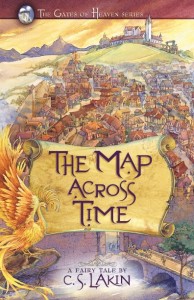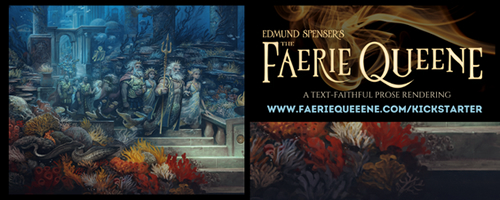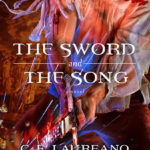Guest Blog: C. S. Lakin, Part 3
This is the third and final post by author C. S. Lakin. Her second fairy-tale fantasy in the Gates of Heaven series, The Map Across Time, is due out early next year.
– – –
Gems from Fairy Tales
by C. S. Lakin
There are thousands of fairy tales from around the world. Recently I’ve been going through the “color” fairy books of my youth: The Red Fairy Book, The Blue Fairy Book, etc. I chuckled the other day when reading Andrew Lang’s introduction to The Green Fairy Book—the third in the series. In it he writes, “This is the third, and probably the last of the Fairy Books of many colours . . .” Of course, there are so many that followed after that collection, I imagined he only stopped because he couldn’t think of any more names for colors!
And I came across this terrific, profound remark: “There are not many people now, perhaps there are none, who can write really good fairy tales, because they do not believe enough in their own stories, and because they want to be wittier than it has pleased heaven to make them.”
 That greatly touched my heart, as I hear the truth in those statements. I believe in my tales with all my heart. In fact, I pour my heart and soul so much into my tales that it took me by surprise, when I finished The Map across Time, to realize I had written my characters to reflect the two deeply integral sides of my soul. What Lang is saying here is a good tale (be it fairy or otherwise) really needs to be a tale the writer believes in. We bring our passion, our emotions, our dreams, and our fears to our stories. The best stories capture those sparks and set aflame a wood blaze. You can always tell when a writer has done that, and when they haven’t. As the famous line from Rich and Famous goes: “If your writing doesn’t keep you up nights, it won’t keep anyone else up either.”
That greatly touched my heart, as I hear the truth in those statements. I believe in my tales with all my heart. In fact, I pour my heart and soul so much into my tales that it took me by surprise, when I finished The Map across Time, to realize I had written my characters to reflect the two deeply integral sides of my soul. What Lang is saying here is a good tale (be it fairy or otherwise) really needs to be a tale the writer believes in. We bring our passion, our emotions, our dreams, and our fears to our stories. The best stories capture those sparks and set aflame a wood blaze. You can always tell when a writer has done that, and when they haven’t. As the famous line from Rich and Famous goes: “If your writing doesn’t keep you up nights, it won’t keep anyone else up either.”
At first I was enthralled and surprised by the call to write fairy tales. Not fantasy, but quite specifically, fairy tales. The more I read them, the more I see so many layers. Most were written to impart morals. Many reflect faith, belief in heaven’s watch care and guidance. Some are a little over the top with extreme punishments, no doubt meant to serve as a scary warning to badly behaved children.
Lang claims many turn away from writing tales because they want to be “wittier” than a fairy tale will allow them to be. But, the sky’s the limit for wit and cleverness in fairy tales—perhaps even more so than in most other genres. Here’s a hilarious passage out of one tale in The Green Fairy Book that describes a king grieving the recent death of his queen:
“He shut himself up in a little room and knocked his head against the walls for grief, until his courtiers were really afraid that he would hurt himself. So they hung feather beds between the tapestry and the walls, and then he could go on knocking his head as long as it was any consolation to him without coming to much harm.”
If that is not witty, what is?








































